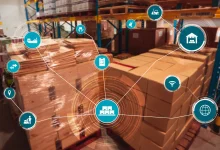
A Comprehensive Guide to Fuel Tank Installation: Ensuring Safety and Efficiency
Introduction
Fuel tank installation is a critical aspect of infrastructure development across various industries, including transportation, construction, agriculture, and energy production. Proper installation not only ensures the safe storage of fuel but also plays a vital role in maintaining operational efficiency and regulatory compliance. In this comprehensive guide, we delve into the essential steps and considerations for fuel tank installation, emphasizing safety, environmental responsibility, and functionality.
Understanding Fuel Tank Installation
Site Selection and Preparation
Before installing a fuel tank, careful site selection and preparation are paramount. Factors such as proximity to buildings, water bodies, and potential environmental hazards must be evaluated. Additionally, ensuring adequate space for installation and future maintenance is essential. Proper soil testing and compliance with local regulations are also crucial steps in site preparation.
Tank Selection
Choosing the right fuel tank is crucial for the success of any installation project. Factors such as tank material, capacity, and compatibility with the stored fuel should be considered. Tanks must meet industry standards and regulatory requirements to ensure safety and longevity. Whether it’s above-ground or underground installation, selecting a reputable manufacturer and supplier is imperative.
Installation Process
The installation process involves several key steps, including excavation, foundation preparation, tank placement, and connection to fuel dispensing systems. Adherence to manufacturer guidelines and industry best practices is essential throughout the installation process. Additionally, proper grounding and ventilation systems should be implemented to mitigate the risk of fire and environmental contamination.
Safety Measures
Safety should be prioritized at every stage of fuel tank installation. This includes implementing appropriate safety protocols for workers, conducting thorough inspections, and installing secondary containment systems to prevent leaks and spills. Regular maintenance and inspection schedules should be established to ensure continued safety and compliance with regulations.
Environmental Considerations
Environmental responsibility is a critical aspect of fuel tank installation. Measures such as spill containment, leak detection systems, and groundwater monitoring should be implemented to minimize environmental impact. Additionally, proper disposal of old or decommissioned tanks is essential to prevent contamination and ensure compliance with regulations.
Fuel Tank Installation and Landfill Pump Controls
Fuel tank installation and landfill pump controls could be in the realm of environmental sustainability and resource management.
Energy Efficiency
Both fuel tank installations and landfill pump controls require efficient management of resources. In the case of fuel tank installations, efficient storage and distribution of fuel are crucial to minimize wastage and ensure energy efficiency. Similarly, landfill pump controls manage the extraction and distribution of gases generated by decomposing waste in landfills, which can be utilized for energy generation or environmental control.
Regulatory Compliance
Both fuel tank installations and landfill pump controls are subject to regulatory requirements aimed at ensuring safety, environmental protection, and compliance with relevant laws and standards. This includes measures such as regular inspections, maintenance procedures, and adherence to safety protocols to prevent accidents or environmental harm.
Technological Integration
In modern applications, both fuel tank installations and landfill pump controls often utilize advanced technologies for monitoring and control purposes. This can include sensors, automation systems, data analytics, and remote monitoring capabilities to optimize performance, detect issues early, and improve overall efficiency.
Conclusion
Fuel tank installation is a complex process that requires careful planning, adherence to regulations, and a commitment to safety and environmental responsibility. By following industry best practices and leveraging advanced technologies, organizations can ensure the safe and efficient storage of fuel while minimizing environmental impact. Landfill pump controls play a crucial role in managing leachate extraction from landfill sites, further highlighting the importance of responsible waste management practices in safeguarding the environment for future generations.









